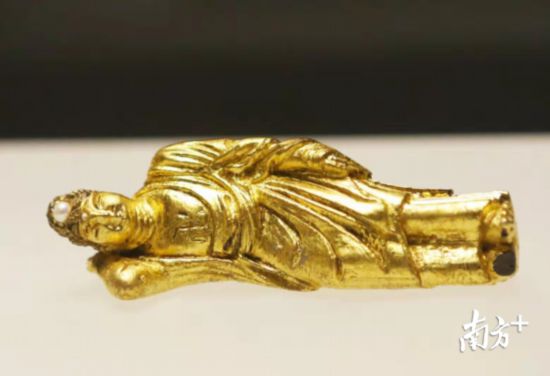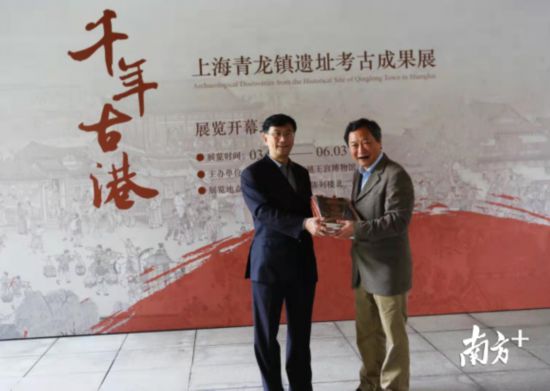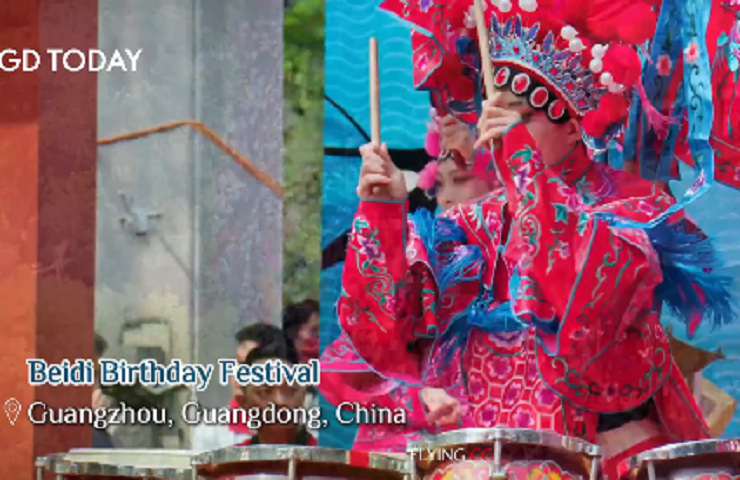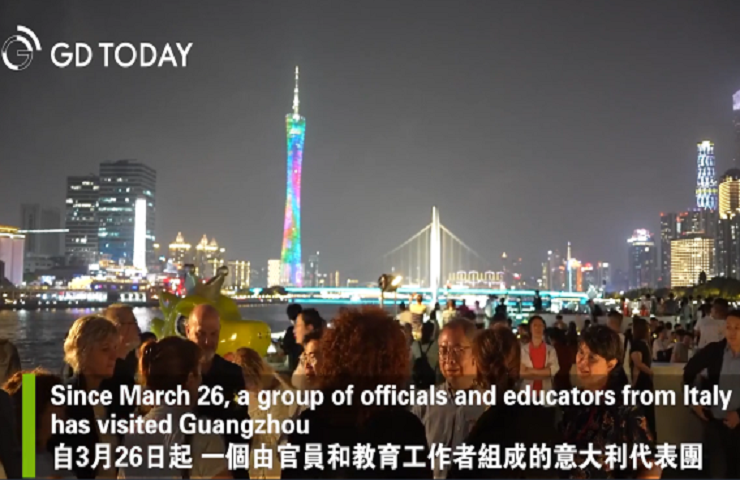Artifacts from ancient Shanghai site shown in Guangzhou
The Museum of the Western Han Dynasty Mausoleum of the Nanyue King held a special exhibition on March 5 to showcase major findings from the Qinglong town site in Shanghai.
Qinglong town was built in the 5th year of the Tianbao reign during the Tang Dynasty (618-907), and was still in use until the Ming Dynasty (1368-1644). Since 2010, the archaeological research department of the Shanghai Museum has been carrying out a long-term exploration and excavation project at the Qinglong town site in Baihe town, Qingpu district, Shanghai. It has discovered many new artifacts and made important archaeological breakthroughs.

A visitor admires an exhibit at the Museum of the Western Han Dynasty Mausoleum of the Nanyue King in Guangzhou. [Photo/Nanfang Plus]
This is the first time the artifacts have been exhibited outside of Shanghai, offering Guangzhou locals a close look at the ancient port town of Qinglong.
The artifacts on display consist of 141 relics and remains from the Tang (618-907) and Song dynasties (960-1279).
According to ancient archives, Guangzhou and Qinglong town in Shanghai had a close bond in ancient times, as both served as important ports. Despite being far apart geographically, the two cities served as key trade hubs for the ancient Maritime Silk Road, which is suggested by remains of wharfs and river ports dating back to the Tang Dynasty being discovered in both places.
The exhibition will run until June 3 and people can enter with their ID cards.

A gold Buddha statue hints at the pervasiveness of Buddhism in ancient China. [Photo/Nanfang Plus]

The exhibition is held jointly by the Shanghai Museum and the Museum of the Western Han Dynasty Mausoleum of the Nanyue King. [Photo/Nanfang Plus]
Copyright © Foreign Affairs Office of Guangzhou Municipal Government,
Hong Kong and Macao Affairs Office of Guangzhou Municipal Government All rights reserved.
Presented by China Daily.
京ICP备13028878号-28















